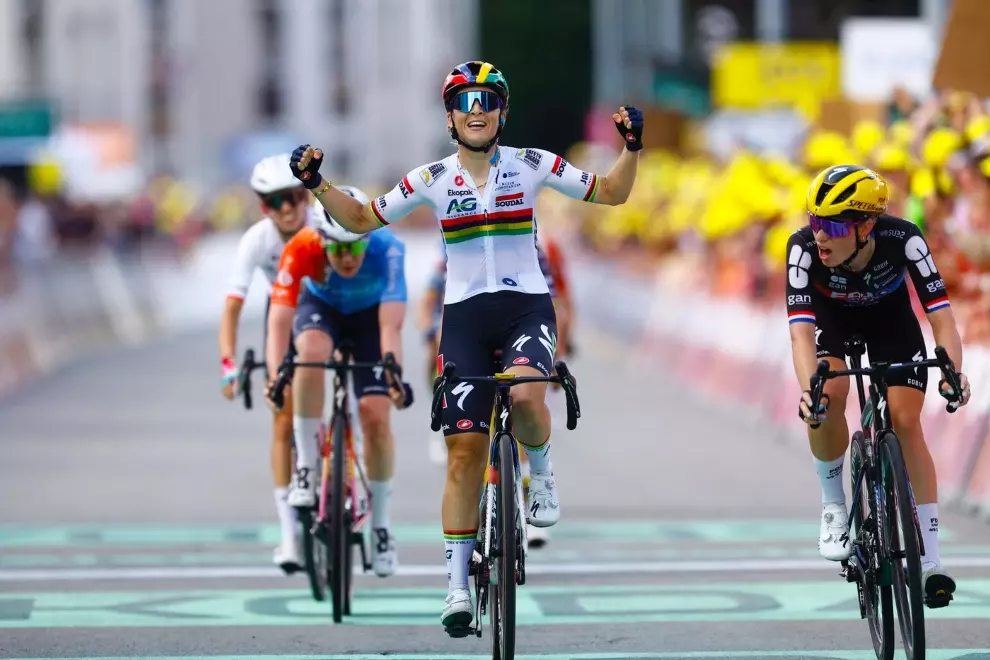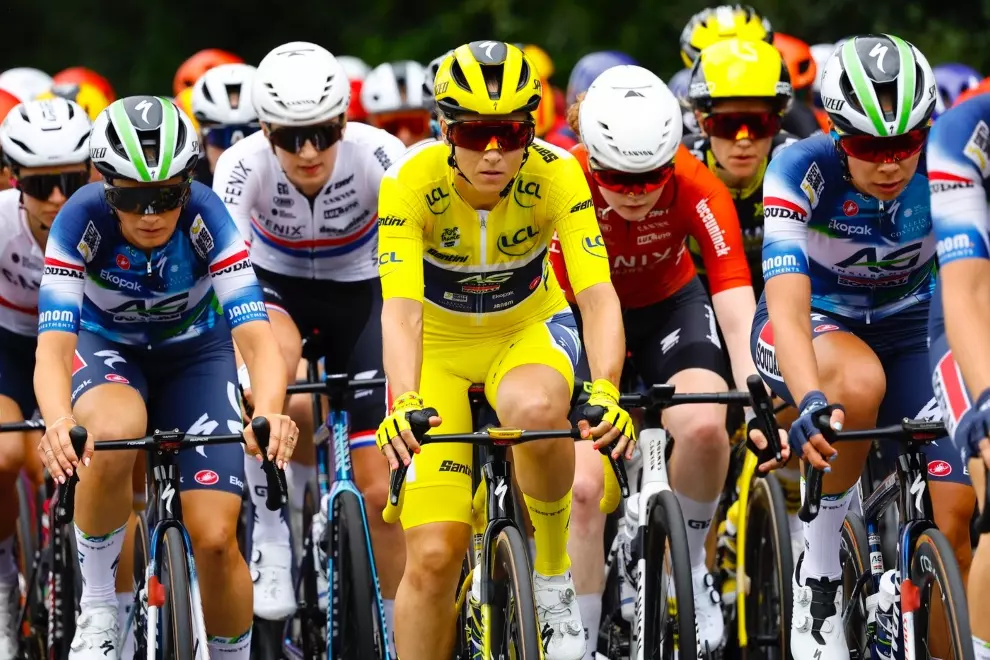Since the first Tour de France in 1903, there have been 109 editions of what has become one of the great sporting events on the planet. During that time, the Tour has created its own rich history, with many places that have become synonymous with the race – too many to describe here. Most of those cited below are mountains, because most of the great drama of the Tour has been made by riders struggling up the steep slope to a mountain peak or pass in the Alps or Pyrenees.
The Champs-Élysées

But any conversation about the iconic locations of the Tour de France must begin at the end, the last stage of the race, because that takes place on the most famous street in the world, the Champs-Élysées, in the most popular city in the world, Paris. The stage also passes many of the city’s iconic places: the Place de la Concorde, the Arc de Triomphe, les Tuileries and the Louvre.
The avenue itself, the Champs, is nothing more than a very expensive mall, with high-end shops, restaurants, night clubs, theatres and cafés. It ranks fifth on the list of the world’s most expensive streets, with annual rents averaging $11,496 [€10,621] / m2. But every year, on a Sunday in July, the shoppers must give way to the fans of road racing, who line the avenue to watch the finale of the most famous road race in the world.
The final stage of the Tour is almost always a victory parade for the yellow jersey winner, with the peloton riding at a leisurely pace as the victor drinks champagne with his team and poses for photographs. The racing finally begins when the riders reach the Champs, where the sprinters vie to win the most prestigious sprint finish in world cycling. The stage usually ends in a bunch sprint; the last rider to win the stage from a breakaway was Alexander Vinokourov, in 2005. Mark Cavendish, now of Astana Qazaqstan, has won the stage four times, more than any other rider. This year the riders will start at Saint-Quentin-en-Yvelines, just outside Paris, and the 115km stage will include eight laps of the Champs.
The Alpe d’Huez

The Alpe d’Huez is probably the best-known of all the Tour de France mountains, no doubt because of the 21 switchback curves that lead up the slope. The 13.8km ascent, at an average gradient of 8.1%, with a maximum of 11.5%, ends at an altitude of 1,850m. It has been part of a Tour 31 times since its introduction in 1952. Oddly, it was not a popular place early on, with almost no spectators on its slopes, but it has become a huge favorite over the years, with thousands of spectators lining the slope near the summit to cheer on the cyclists as they race up.
Geraint Thomas became the first, and so far only, rider to win the Alpe d’Huez stage of the Tour de France while wearing the race leader’s yellow jersey when he crossed the finish line first in 2018. He went on to win that Tour de France. In one of the more bizarre Tour de France moments, in 1999 Giuseppe Guerini was well in front on the climb and only a few hundred meters from the finish line when he collided with a spectator who had stepped in front of him to take a photograph. The cool Guerini simply got back on his bike and won the stage by 21 seconds.
The mountain has become a sporting pilgrimage destination for Dutch cycling fans because of Joop Zoetemelk’s brave win on the climb in 1976, by 3 seconds over the Belgian Lucien Van Impe. These fans are easy to recognize because they are dressed in orange and are often just a little tipsy.
Bordeaux

Mention Bordeaux and people inevitably think of great red wines produced in the region and enjoyed all over the world. But the city, which is located on the Garonne river and 50km from the Atlantic coast, is also a great sports city, with a successful rugby club that plays at the highest level and a football team that played for many years in the elite Ligue 1, until financial issues due largely to the Covid pandemic led to its relegation in 2021. It is also a favorite stop-off for the Tour and is, with 81 visits, the city that has hosted the race most often after Paris.
This year’s stop, at the conclusion of stage 7, is the first in 13 years. The last winner of a Bordeaux stage finish was Mark Cavendish, who is hoping this year to break the record of 34 Tour de France stage wins he currently shares with the great Eddy Merckx. It would be fitting if the great ‘Cav’ set the record in Bordeaux, a city with a rich cycling history. It used to host a major six-day bike race and is home to a famous velodrome the Bordeaux-Lac Stadium, where the 1998 and 2006 track world championships were held and where Chris Boardman, Graeme Obree, Miguel Indurain and Tony Rominger set world one-hour records in 1993 and 1994.
Mont Ventoux

Mont Ventoux is considered one of the most gruelling climbs in the Tour de France, and has been visited by Tour riders 18 times since 1951. The Giant of Provence, as it is called, is 1,909m high and its bare, rocky limestone summit is often described as resembling the surface of the moon. Unlike other classic Tour mountains of the Alps and the Pyrenees, which are surrounded by tall peaks, the Ventoux stands alone, towering over Provence and visible from afar. It has three ascents, each of which is difficult.
In 2016, the ascent was cut short because of the fierce Mistral wind blowing over its slopes, but that didn’t stop the mountain from acting up. A few km below the revised ‘summit’, spectators got too close to the riders, causing race leader (and eventual winner) Chris Froome to crash into the back of the rider in front of him, who dominoed into the back of a motorbike carrying a cameraman. In one of the iconic scenes of the Tour de France, Froome tossed aside his broken bike and started running up the steep road until a new bike arrived. In 2021, the Ventoux was climbed not once, but twice, with the Jumbo-Visma rider Wout van Aert taking a famous victory.
It is not a likeable mountain. In fact, the late French philosopher Roland Barthes called it “a god of evil, to which sacrifices must be made. It never forgives weakness and extracts an unfair tribute of suffering.”
The Col du Tourmalet

The Tourmalet is the most-climbed mountain in Tour de France history, having featured in the race 90 times since 1910. At 2,115m, it is one of the highest paved mountain passes in the French Pyrenees and probably the most popular cycling mountain in the world: this year the Tour de France Femmes avec Zwift and the Vuelta a España will also visit the mountain.
Octave Lapize, the first rider to cross it, in 1910, shouted at the race organisers as, exhausted and cold, he pushed his bike up the slope, “Assassins! You are all assassins!” Nevertheless, he went on to win the Tour that year, as only 41 riders of the 110 that started were able to finish the race.
The climb has since become one of the most treasured on the Tour de France. “When you’re a climber, all wins at the Tour de France are beautiful. But to win on a monument like this, the Tourmalet, that’s what I love,” said a tearful Thibaut Pinot after winning the Tourmalet climb at the 2019 Tour.
Puy de Dôme

The Puy de Dôme is neither in the Alps nor in the Pyrenees; it is a young volcano in the Massif Central in central France. It was first climbed in the Tour de France in 1952 and has been used in the Tour only 13 times since. It is returning to the race in 2023 for the first time in 35 years, and will be the finish of stage 9, a climb of 13.3km at an average gradient of 7.7%, with the final 4.5km averaging almost 12%. It has been selected here over more renowned climbs – such as the Col du Galibier, the Col de la Madeleine and the Col d’Aubisque, to name just three – because on July 12, 1964, it was the stage for one of the most memorable duels in the most storied rivalry in the history of the Tour, that between Jacques Anquetil and Raymond Poulidor.
The cool, aloof Anquetil had already won the Tour four times and was wearing the yellow jersey at the beginning of stage 20, with a lead of 56 seconds over Poulidor. Only two stages remained in the Tour, one of them an ITT in which Anquetil, known as “Mr. Chrono,” was the big favorite. To make a long story short, with less than 1km to go in the stage, after the two had raced together on most of the ascent, Poulidor finally surged ahead, while Anquetil began to struggle. When Poulidor crossed the finish line on the Puy, after more than 7 hours of racing, Anquetil was still labouring up the slope.
When he crossed the finish line, he asked his sports director Raphaël Géminiani how much of his lead of 56 seconds he had left. “Fourteen seconds,” Géminiani said. “That’s 13 more than I need,” Anquetil replied, and went on to become the first cyclist to win the Tour five times. Poulidor is known today as the greatest rider never to wear the yellow jersey, and as the grandfather of Mathieu van der Poel. And stage 20 of the 1964 Tour is regarded by at least one cycling historian as “the greatest bike race – ever.




